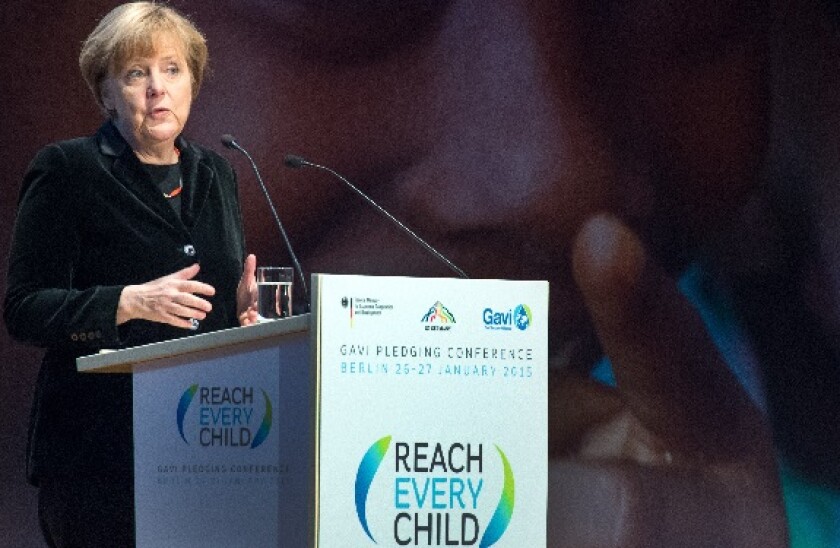IFFIm raises debt in order to offer quick funding for Gavi, an international organisation that vaccinates almost half of the world’s children. IFFIm issues bonds and sukuk backed by long-term donor pledges from developed countries. It benefits from an Aa1/AA/AA- credit rating.
“The IFFIm structure itself is incredibly efficient,” said Ardalan. “We have no staff, we have a board which is in effect an executive board, we outsource all our treasury operations to the World Bank and our governance to Gavi.”
Some wonder if this type of funding model could be extended to other areas.
“If you look at for example areas like sanitation, education, obviously climate, there’s a whole range of social issues that need substantial amounts of money today, the benefits of which will occur over many years,” said Ardalan. “So having a facility which allows countries to provide the money over time but have the investments made today is… intrinsically very attractive.”
There are reasons to be sceptical about lots of similar ventures taking off. IFFIm issued its first bond in 2006, so there has been ample time for others to follow in its footsteps if that were feasible. And the international political cooperation that might be required for such an initiative may be thinner on the ground today.
“I think it’s intrinsically complex to try and create structures like IFFIm. You need to have all the stakeholders together,” said Ardalan. “For many of these investment banks and insurance companies, these types of transaction are very idiosyncratic, they are very time consuming to try and structure, so they are not very attractive from a commercial point of view.”
He said that in the short-term, leadership was needed.
Yet recognition of the grave environmental and social challenges facing the world is now mainstream in financial markets. Many investors and banks are keen to show off their ESG credentials in way they were not even five years ago.
“The more institutions such as or similar to IFFIm we create, the more we are able to address crises,” Ardalan said. In the context of Covid-19, he added: “If IFFIm had not been there, there would be no means by which Gavi would be able to mobilise substantial resources very, very quickly.”
IFFIm issued a Nkr1.7bn ($176m) bond in June following a donor pledge from the Norwegian government.
Other organisations are exploring similar ideas. IFFIm has worked with the International Federation of Red Cross and Red Crescent Societies (IFRC), which has plans that look comparable to what IFFIm does.
It has been planning to set up a fund that will receive donor cash and be promised additional funding based on outcomes achieved. This would give it an equity base and a revenue stream, and on the back of that it could raise debt.
On Wednesday, Ardalan suggested that a structure like IFFIm’s could be set up for the purpose of disaster response. Governments would pledge financial aid in the event of a disaster, but they would only have to pay if that disaster occurs, and even then over a period of time. But if a disaster occurred, the structure could borrow cash straight away backed by those pledges.
This would in effect be a form of insurance against disasters. In this sense it is similar to catastrophe contingent credit lines, which are pre-approved development loans that can be drawn when required.
A different way to do this using technology from the insurance industry is to issue a catastrophe bond, where bondholders take on the risk of losing principal if a disaster triggers the bond, and receive a coupon in exchange.
“I believe that one of big challenges that we have right now is to ensure that the various stakeholders and parties involved in this area work collectively together and not in individual siloes,” said Ardalan.

